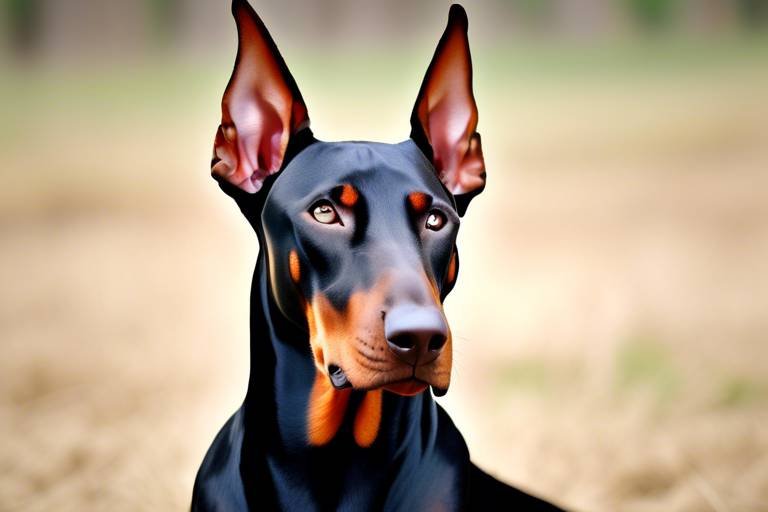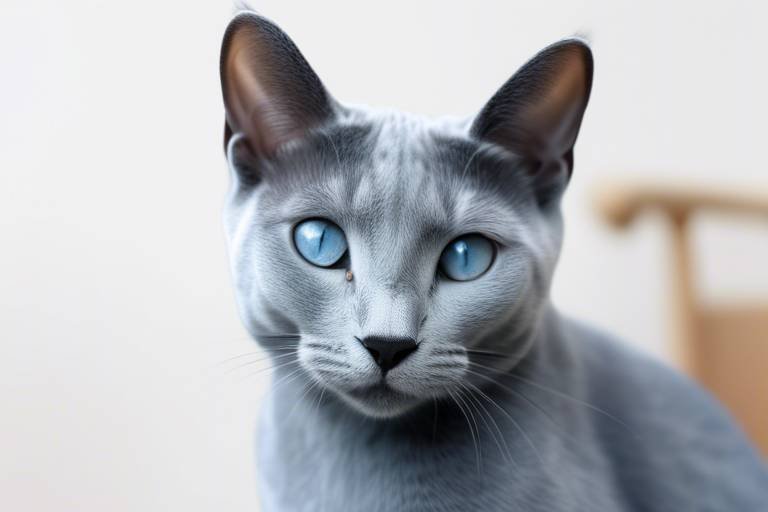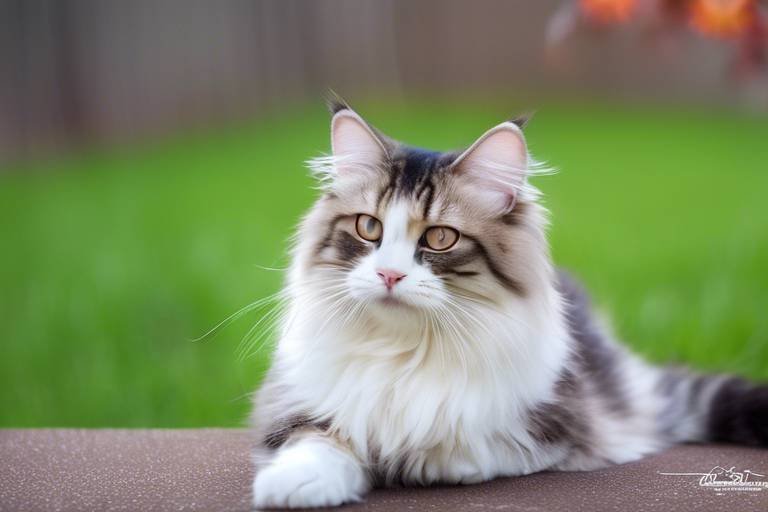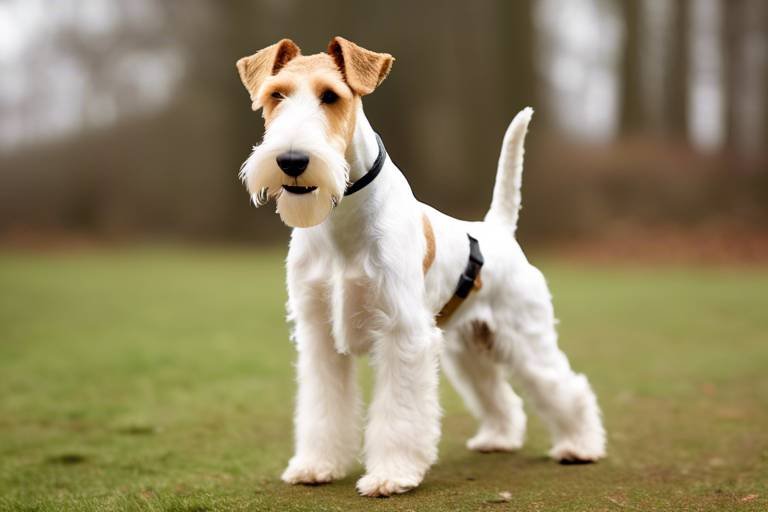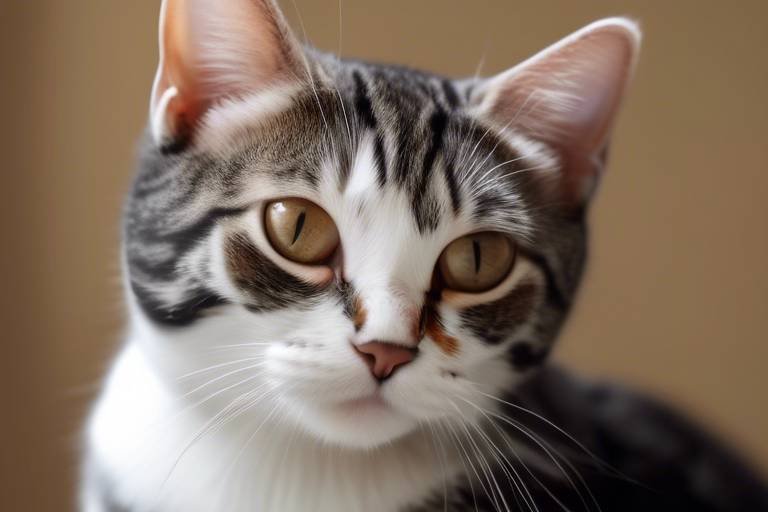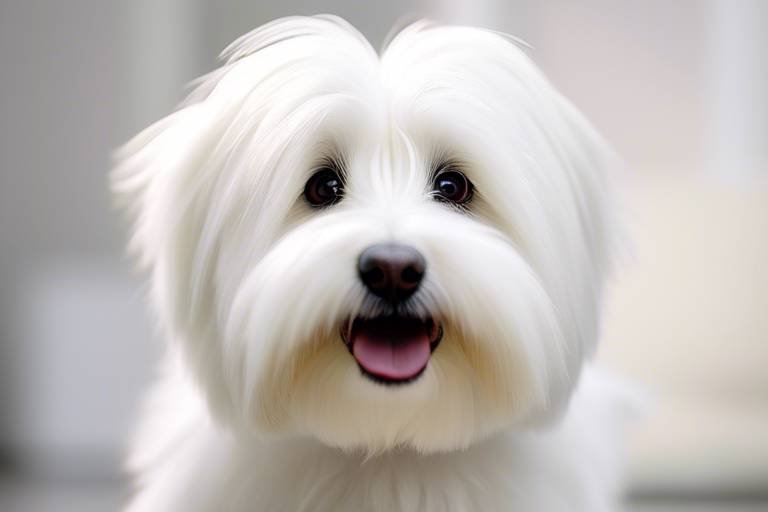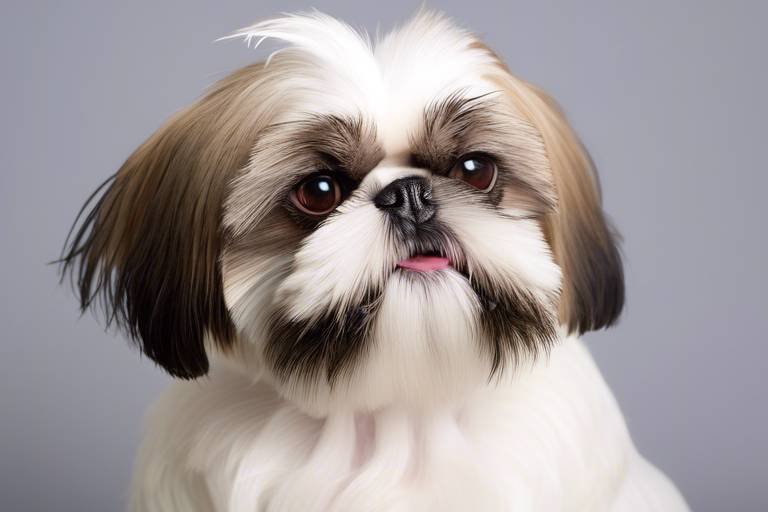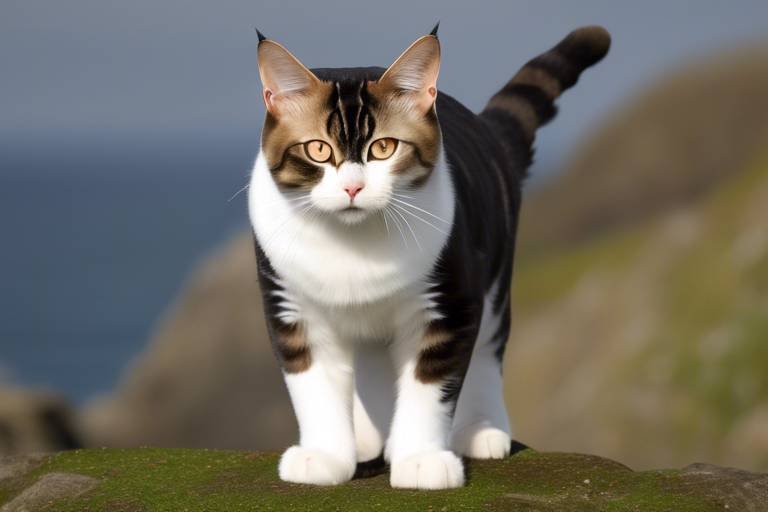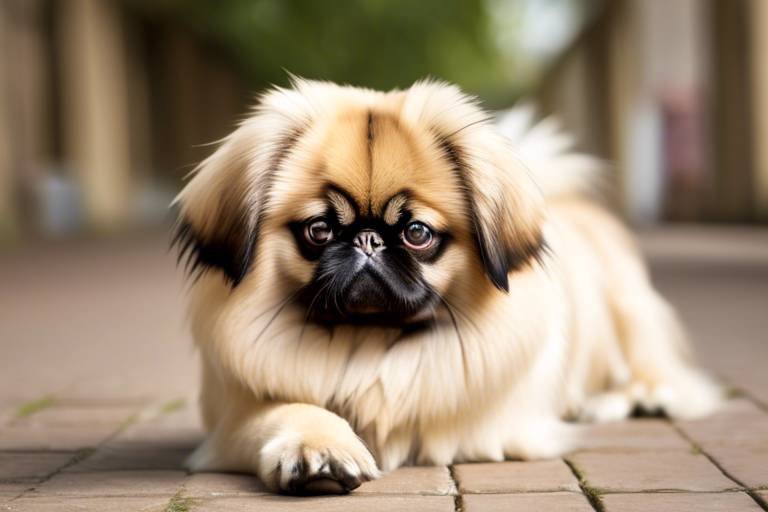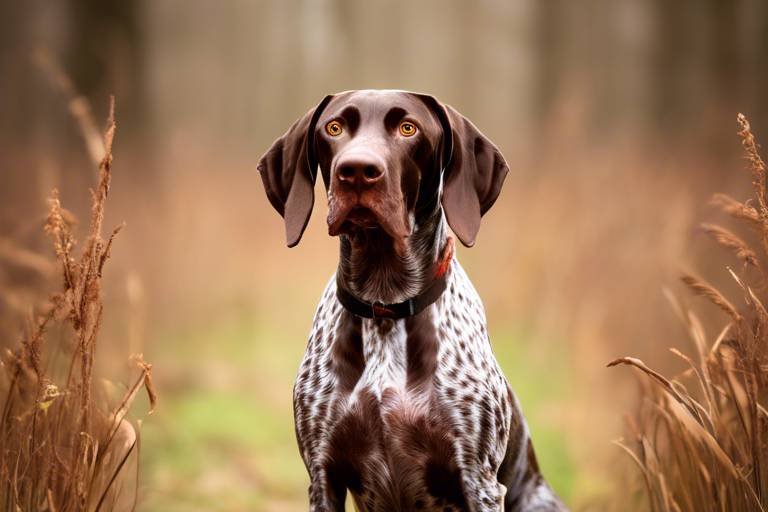The Affectionate Nature of the Snowshoe Cat
The Snowshoe cat is not just another feline; it’s a delightful bundle of affection wrapped in a unique coat. If you’ve ever dreamed of a cat that’s as playful as a puppy and as loving as a loyal friend, then the Snowshoe might just be your perfect match. With their captivating blue eyes and distinctive white paws, these cats have a charm that can melt the heart of even the most stoic cat lover. But it’s not just their looks that make them special; it's their affectionate temperament that truly sets them apart from other breeds.
Snowshoe cats are known for their playful antics and social nature. They thrive on interaction, not only with their human companions but also with other pets. Imagine coming home after a long day to find your Snowshoe waiting at the door, ready to greet you with a gentle nuzzle and a playful pounce. Their affectionate behavior often makes them the life of the household, bringing joy and laughter to families of all sizes. These cats are not just pets; they become cherished family members who love to be involved in every aspect of your life.
What makes the Snowshoe cat's affection so special? For starters, they possess an innate ability to bond with their humans. They are incredibly intuitive and can sense when you’re feeling down or stressed. It’s not uncommon for a Snowshoe to curl up on your lap or nuzzle against your side, offering comfort and companionship when you need it most. This breed is known for its extroverted nature, often following their owners around the house, eager to be part of the action. They love to play games, chase toys, and even engage in interactive play with their humans, making every moment spent together a delightful experience.
Moreover, their affectionate nature extends beyond just their human family. Snowshoe cats are generally friendly and sociable, making them excellent companions for other pets. They have a playful spirit that encourages them to engage in friendly tussles with dogs or other cats, creating a lively and harmonious household. Their adaptability means they can fit into various living situations, whether you live in a bustling home with children or a quieter space with just a few companions.
In summary, the Snowshoe cat is a breed that embodies affection and playfulness. Their unique combination of striking appearance and loving temperament makes them a joy to have around. If you’re considering adding a furry friend to your home, the Snowshoe cat promises not just companionship but a lifelong bond filled with love, laughter, and endless play. So, are you ready to welcome a Snowshoe into your life? You might just find that this affectionate breed is exactly what you’ve been looking for!
- Are Snowshoe cats good with children? Yes, they are known for their friendly and playful nature, making them great companions for kids.
- Do Snowshoe cats require a lot of grooming? No, their short coat is relatively low maintenance, but regular brushing helps reduce shedding.
- How social are Snowshoe cats? Very social! They thrive on interaction and enjoy being part of family activities.
- What is the average lifespan of a Snowshoe cat? With proper care, Snowshoe cats can live between 12 to 15 years.

Origin and History
The Snowshoe cat breed has a captivating origin story that intertwines the traits of the Siamese and American Shorthair cats. In the 1960s, a dedicated breeder named Dr. Thomas G. Dorsey aimed to create a breed that not only showcased the striking color patterns of the Siamese but also possessed the robust and affectionate nature of the American Shorthair. The result was nothing short of enchanting: a cat that was not just beautiful but also incredibly loving and social.
The breed’s name, "Snowshoe," is derived from the distinctive white markings on their paws, resembling snowshoes. This unique feature, combined with their striking blue eyes and playful demeanor, quickly captured the hearts of cat lovers. It's fascinating to think that what began as an experimental breeding program has blossomed into a beloved breed known for its affectionate nature.
Snowshoe cats are often described as people-oriented, thriving on human interaction and social engagement. Unlike many other breeds that may prefer solitude, Snowshoe cats actively seek companionship, making them ideal pets for families and individuals alike. Their history is not just about genetics; it's also about the bond they form with humans, which is a hallmark of their character.
In the early days, Snowshoe cats were relatively rare, but their popularity soared as more people recognized their charming personalities and unique looks. Today, they are cherished members of many households, known for their playful antics and affectionate behavior. If you're considering adding a Snowshoe cat to your family, you're not just bringing home a pet; you're inviting a loving companion into your life.
To summarize, the Snowshoe cat's origin is a testament to the beauty of breeding for temperament and appearance. As we continue to appreciate these wonderful felines, it's essential to understand the history that shaped them into the affectionate and delightful companions they are today.

Physical Characteristics
The Snowshoe cat is not just another breed; they are a delightful combination of beauty and personality. Their striking appearance is one of the first things that captures the attention of cat lovers. With their unique coat patterns and charming features, Snowshoe cats are truly a sight to behold. They typically have a medium build, which gives them a sturdy yet graceful look. Their body is well-proportioned, and they often weigh between 8 to 12 pounds, making them a perfect fit for families of all sizes.
One of the most defining features of the Snowshoe cat is their white paws, which stand out against their colored coats. This breed has a short to medium-length coat that is soft and silky, inviting you to pet them for hours. The combination of their white paws and the color of their coat creates a stunning visual effect that many find irresistible. Snowshoe cats can come in various colors, including seal point, blue point, and chocolate point. Each color variation brings its own charm, making it hard to choose just one!
The coat patterns of Snowshoe cats are not only beautiful but also unique. They typically exhibit a colorpoint pattern, where the extremities (ears, face, paws, and tail) are darker than the rest of the body. This distinctive pattern is what gives them their name, as it resembles the look of a snowshoe. The contrast between the darker points and the lighter body color creates a captivating appearance that draws people in.
Snowshoe cats come in several color variations, each with its own distinct beauty. The most common colors include:
- Seal Point: A rich dark brown on the points with a creamy body.
- Blue Point: A soft grayish-blue on the points with a lighter body.
- Chocolate Point: A warm milk chocolate color on the points with a light ivory body.
These color variations not only enhance their visual appeal but also add to their unique personality traits. Each color can exhibit slightly different temperaments, making it an exciting adventure to find the perfect match for your family.
Understanding the size and build of Snowshoe cats is essential for potential owners. On average, they stand about 8 to 10 inches tall at the shoulder and can reach lengths of up to 18 inches, not including their tail. Their build is muscular yet agile, allowing them to be both playful and graceful. The combination of their size and strength makes them excellent climbers and jumpers, so be prepared for a little acrobatics around your home!
In summary, the physical characteristics of Snowshoe cats are just as captivating as their personalities. With their unique coat patterns, charming color variations, and delightful size, they are sure to win the hearts of anyone who crosses their path. Whether you’re drawn in by their adorable white paws or their playful nature, bringing a Snowshoe cat into your home is a decision you won’t regret!
Coat Patterns
The Snowshoe cat is not just a pretty face; their coat patterns are a stunning testament to their unique heritage. This breed is renowned for its beautiful and distinct appearance, which is a delightful blend of the Siamese and the American Shorthair. The most striking feature of the Snowshoe cat is undoubtedly its white paws, which seem to wear little socks, giving them an adorable charm that’s hard to resist. But let's dive deeper into what makes these coat patterns so special.
Snowshoe cats typically exhibit a medium-length coat that is soft and silky to the touch. The primary base color can vary, but it often includes shades like seal, blue, chocolate, and lilac. These colors are complemented by their signature white markings that create a beautiful contrast. The combination of these colors not only enhances their visual appeal but also reflects their playful and affectionate nature.
One of the most fascinating aspects of Snowshoe cats is their colorpoint pattern. This means that their extremities—such as the ears, face, paws, and tail—are darker than the rest of their body. This striking contrast creates a visual effect that draws the eye and makes them stand out among other breeds. The colorpoint pattern can appear in various forms, including:
- Traditional Colorpoint: Where the darker coloration is more defined and prominent.
- Tabby Colorpoint: Featuring a striped or spotted pattern on the points, adding an extra layer of texture.
- Solid Colorpoint: A more uniform look with minimal variation in color.
Additionally, the markings on their faces are often described as "mask-like," enhancing their expressive features. The white markings typically form a V-shape on their faces, which gives them a curious and inquisitive appearance. This unique facial pattern is not just for looks; it adds to their social and interactive personalities, making them incredibly engaging companions.
When it comes to grooming, the Snowshoe cat's coat requires minimal maintenance due to its short to medium length. A simple weekly brushing can help keep their coat healthy and free from loose fur. However, it’s essential to check their paws regularly, as the white fur can sometimes hide dirt or debris. Keeping their paws clean not only maintains their appearance but also ensures their overall health and well-being.
In conclusion, the coat patterns of the Snowshoe cat are more than just a visual delight; they are a reflection of the breed's history and affectionate temperament. Whether you're drawn to their beautiful markings or their playful nature, one thing is for sure—Snowshoe cats have a way of capturing hearts with their unique charm.
- What colors do Snowshoe cats come in? Snowshoe cats can be found in various colors, including seal, blue, chocolate, and lilac, often with white markings.
- How often should I groom my Snowshoe cat? A weekly brushing is usually sufficient to keep their coat healthy and clean.
- Are Snowshoe cats good with children? Yes, their affectionate and playful nature makes them excellent companions for families with children.
- Do Snowshoe cats have any specific health issues? Like any breed, they can be prone to certain health issues, so regular vet check-ups are essential.
Color Variations
The Snowshoe cat breed is not just a feast for the eyes but also a canvas of stunning color variations that captivate cat lovers everywhere. These felines are characterized by their striking white paws, which create a beautiful contrast against their various coat colors. The most common colors include seal point, blue point, chocolate point, and lilac point. Each of these colors brings its own unique charm and personality to the breed.
To give you a better idea of what to expect when it comes to Snowshoe cat colors, here’s a quick breakdown of the most popular variations:
| Color Variation | Description |
|---|---|
| Seal Point | Dark brown points on the ears, face, paws, and tail, with a creamy white body. |
| Blue Point | Grayish-blue points with a soft white body, giving a cool, elegant appearance. |
| Chocolate Point | Rich chocolate brown points on a pale cream body, offering a warm and inviting look. |
| Lilac Point | Light gray points with a hint of lavender on a white or cream body, creating a delicate aesthetic. |
In addition to these primary colors, Snowshoe cats can also exhibit a variety of tabby patterns, which add another layer of visual intrigue. The tabby markings can appear in a variety of forms, such as mackerel, classic, or spotted, and they often blend beautifully with the breed's signature white paws. This blend of colors and patterns makes each Snowshoe cat a unique masterpiece, much like a work of art that you can cuddle with!
What makes these color variations even more fascinating is that they can sometimes change slightly as the cat ages. Kittens may start with lighter shades and develop their full coloration as they mature, making it an exciting journey for any new owner. Imagine watching your little furball transform into a stunning adult cat, each day revealing more of its true colors!
Ultimately, whether you’re drawn to the classic seal point or the enchanting lilac point, Snowshoe cats offer a palette of colors that reflects their friendly and affectionate nature. Their unique appearance, combined with their loving temperament, makes them not just pets, but cherished members of the family.
- What is the average lifespan of a Snowshoe cat? Snowshoe cats typically live between 12 to 15 years, with proper care and a healthy lifestyle.
- Are Snowshoe cats good with children? Yes! Snowshoe cats are known for their gentle and playful nature, making them great companions for kids.
- Do Snowshoe cats require special grooming? While they have a short coat, regular brushing can help minimize shedding and keep their fur healthy.
- Are Snowshoe cats prone to any specific health issues? Like all breeds, they can be susceptible to certain genetic conditions, so regular vet check-ups are essential.
Size and Build
The Snowshoe cat is not just a pretty face; they also come with a well-defined size and build that makes them quite the sight to behold. Generally, these cats are considered to be medium-sized, weighing anywhere from 8 to 12 pounds on average. Their height typically ranges between 9 to 12 inches at the shoulder, giving them a sturdy yet agile appearance. This combination of size and strength allows them to engage in playful antics while also being perfectly cuddly companions.
One of the most charming aspects of the Snowshoe cat is their muscular build. They possess a strong bone structure, which gives them a robust appearance. Their body is well-proportioned, with a broad chest and a slightly rounded face that adds to their overall charm. Their legs are medium in length, which provides them with a graceful gait as they move about their environment. The paws are a standout feature; they are large and rounded, often giving the impression of little snowshoes, hence the breed's name.
It's also worth noting that the Snowshoe cat's size can be influenced by various factors, including genetics and diet. If you're considering adopting one, it's crucial to provide them with a balanced diet and regular exercise to maintain their healthy physique. A well-fed Snowshoe will not only look good but will also feel good, making for a more lively and affectionate pet.
In terms of overall build, Snowshoe cats are known for their athleticism. They love to climb, jump, and explore their surroundings. This means that they require a stimulating environment that encourages their natural instincts. Providing climbing trees or interactive toys can help keep their bodies fit and their minds sharp. In essence, the Snowshoe cat is a delightful blend of beauty and brawn, making them an excellent choice for families looking for an engaging and loving pet.
| Attribute | Measurement |
|---|---|
| Average Weight | 8 - 12 pounds |
| Average Height | 9 - 12 inches |
In summary, the Snowshoe cat's size and build are just as captivating as their affectionate nature. Their medium size, muscular build, and playful demeanor make them not only visually appealing but also fantastic companions. So, if you're looking for a cat that combines beauty with a lively spirit, the Snowshoe might just be your perfect match!
- How big do Snowshoe cats get?
Snowshoe cats typically weigh between 8 to 12 pounds and stand about 9 to 12 inches tall at the shoulder. - What is the temperament of a Snowshoe cat?
They are known for their friendly and affectionate nature, making them great companions for families. - Do Snowshoe cats require special care?
While they have specific grooming needs, proper care includes a balanced diet and regular exercise. - Are Snowshoe cats good with children?
Yes, their playful and gentle demeanor makes them excellent pets for families with children.
Temperament and Behavior
The Snowshoe cat is not just another pretty face; they are a bundle of joy wrapped in fur! With their playful spirit and affectionate demeanor, these cats have a knack for stealing hearts and brightening homes. Known for being extremely sociable, Snowshoe cats thrive on interaction and companionship. They are not the type to sit alone in a corner; instead, they prefer to be right in the thick of the action, whether it's playing with their human friends or engaging with other pets in the household.
What makes them truly special is their friendly and outgoing nature. Snowshoe cats are often described as dog-like in their loyalty and attachment to their owners. They love to follow you around, curious about what you’re up to, and are always ready to join in on family activities. Imagine a cat that greets you at the door, eager for some quality time! This breed is known to form strong bonds with their families, making them an ideal choice for households that are looking for a loving pet.
When it comes to playtime, Snowshoe cats are incredibly energetic and playful. They enjoy interactive toys and games that challenge their minds and bodies. Whether it's chasing a feather wand or playing hide-and-seek, their playful antics can provide endless entertainment. It’s not uncommon for them to engage in playful wrestling matches with their human companions or even other pets. They have a way of turning even the simplest game into an adventure!
Moreover, Snowshoe cats are known for their intelligence. They are quick learners and can be trained to perform tricks or follow commands, much like dogs. This intelligence, combined with their playful nature, makes them a delight to have around. However, it’s important to keep their minds stimulated with puzzles and toys, as they can get bored easily. A bored Snowshoe cat might resort to mischievous behavior, so keeping them engaged is key to a happy feline.
Socialization is crucial for Snowshoe cats. They thrive in environments where they can interact with people and other pets. If you’re considering adding a Snowshoe to your family, be prepared to offer them plenty of affection and attention. They are not solitary creatures and can become lonely if left alone for long periods. To help prevent loneliness, consider adopting a pair or ensuring they have plenty of toys and activities to keep them busy.
In summary, the Snowshoe cat's temperament is characterized by their affectionate, playful, and intelligent nature. They are the perfect companions for families, singles, and anyone looking for a furry friend that brings joy and laughter into their lives. With their unique personality traits and social needs, Snowshoe cats truly embody the saying, “A house is not a home without a cat.”
- Are Snowshoe cats good with children? Yes, Snowshoe cats are generally very good with children. Their playful nature makes them great companions for kids.
- Do Snowshoe cats require a lot of grooming? Snowshoe cats have a short coat that requires minimal grooming, but regular brushing helps keep their coat healthy.
- How much exercise do Snowshoe cats need? They are energetic and need daily playtime and mental stimulation to stay happy and healthy.
- Are Snowshoe cats prone to any specific health issues? Like all breeds, they can have some health concerns, but regular vet check-ups can help monitor their health.

Care and Maintenance
Taking care of a Snowshoe cat is not just a responsibility; it's a delightful journey filled with love and companionship. These charming felines thrive in a nurturing environment, and their well-being largely depends on the attention and care they receive from their owners. From grooming to feeding, each aspect of their care contributes to their happiness and health. So, let’s dive into the essential elements of Snowshoe cat maintenance, ensuring your furry friend remains in tip-top shape!
First and foremost, grooming is a vital part of maintaining a Snowshoe cat's beauty and health. Their short, fine coat requires minimal grooming, but regular brushing helps to remove loose hairs and reduce shedding. A gentle brush a couple of times a week will suffice, but during shedding seasons, you might want to increase the frequency. Not only does this keep your home cleaner, but it also strengthens the bond between you and your cat. Plus, who doesn't love a good petting session? Remember, grooming isn’t just about aesthetics; it’s also a great opportunity to check for any skin issues or abnormalities.
Feeding your Snowshoe cat with a balanced diet is crucial for their growth and overall health. A high-quality cat food that lists meat as the first ingredient is ideal, as Snowshoes are active and require proper nutrition to fuel their playful antics. You might consider a mix of dry and wet food to keep them hydrated and satisfied. Portion control is essential, as these cats can be prone to obesity if overfed. Always consult your veterinarian for personalized feeding recommendations based on your cat's age, weight, and activity level.
Health care is another essential aspect of Snowshoe cat maintenance. Regular veterinary check-ups play a significant role in preventing health issues. Snowshoe cats are generally healthy, but like all breeds, they can be susceptible to certain conditions. Common health concerns include dental issues, obesity, and genetic disorders. Keeping up with vaccinations and preventive care, such as flea and tick treatments, can help ensure your Snowshoe remains healthy and happy. It's also wise to be observant of any changes in their behavior or appetite, as these can be early signs of health problems.
| Health Considerations | Preventive Measures |
|---|---|
| Dental Issues | Regular dental check-ups and cleanings |
| Obesity | Portion control and regular exercise |
| Genetic Disorders | Screening and responsible breeding practices |
Finally, don't forget about the importance of mental stimulation and social interaction. Snowshoe cats are known for their affectionate nature and enjoy being around people. Engaging them with toys, interactive play, and puzzle feeders can keep their minds sharp and their spirits high. Moreover, consider introducing them to other pets in the household gradually, as Snowshoes are generally sociable and can thrive in multi-pet environments. Just like us, they need love, attention, and a little bit of playtime to lead a fulfilling life.
- How often should I groom my Snowshoe cat? Aim for brushing them a couple of times a week, increasing during shedding seasons.
- What should I feed my Snowshoe cat? A high-quality cat food with meat as the first ingredient is best, with a mix of dry and wet food.
- Are Snowshoe cats prone to any health issues? They can be susceptible to dental issues, obesity, and some genetic disorders, so regular vet check-ups are essential.
- Do Snowshoe cats get along with other pets? Yes, they are generally sociable and can thrive in homes with other pets when introduced properly.
Grooming Needs
Grooming is an essential part of caring for your Snowshoe cat, not just for their appearance but also for their overall health and happiness. These charming felines have a short to medium coat that requires regular attention to keep it looking its best. While Snowshoe cats are generally low-maintenance compared to some long-haired breeds, neglecting their grooming can lead to issues such as matting, skin problems, and excessive shedding. So, how do you ensure your Snowshoe stays in tip-top shape?
First and foremost, brushing your Snowshoe cat is a great way to bond with them while keeping their coat clean and shiny. Aim for a gentle brush at least once a week. This will help remove loose hair, dirt, and dander, reducing the amount of fur you find around your home. A slicker brush or a rubber grooming mitt works wonders on their coat, making it a pleasant experience for both you and your furry friend. Plus, it stimulates their skin, promoting healthy circulation.
Another vital aspect of grooming is checking their ears and teeth regularly. Snowshoe cats are prone to ear infections, so keeping their ears clean can prevent potential health issues. Use a soft, damp cloth or a veterinarian-recommended ear cleaner to gently wipe the outer part of their ears. When it comes to dental care, brushing your cat's teeth a few times a week can significantly reduce the risk of dental disease. If your Snowshoe is resistant to having their teeth brushed, consider dental treats or water additives designed to promote oral health.
Don't forget about their nails! Regular nail trimming is essential to prevent overgrowth and potential injury. Aim to trim your Snowshoe's nails every 2-3 weeks, and make sure to use a pair of cat nail clippers. If you're unsure how to trim their nails, consult your veterinarian for guidance.
Lastly, keep an eye on their bathing needs. Snowshoe cats are generally good at self-grooming, but occasional baths can help if they get into something messy or if they have skin issues. Use a cat-specific shampoo and make sure to rinse thoroughly to avoid any residue that could irritate their skin. Remember, the goal of grooming is not just to keep them looking good but to ensure they feel good too!
- How often should I groom my Snowshoe cat? Aim to brush them at least once a week to keep their coat healthy and reduce shedding.
- Do Snowshoe cats need baths? Generally, they do a good job of self-grooming, but occasional baths may be necessary if they get dirty or have skin issues.
- What type of brush is best for Snowshoe cats? A slicker brush or rubber grooming mitt works well for their short to medium coat.
- How can I keep my Snowshoe's teeth healthy? Regular brushing and dental treats can help maintain their oral health.
Health Considerations
When it comes to keeping your Snowshoe cat healthy, understanding their specific health considerations is key. Like any breed, Snowshoe cats can be prone to certain health issues, but with proper care and attention, you can help them live a long, happy life. Regular veterinary check-ups are essential, as they allow for early detection and treatment of potential problems. It's crucial to stay informed about the common health concerns associated with this breed.
One of the notable health issues that Snowshoe cats may face is hypertrophic cardiomyopathy (HCM). This heart condition is relatively common in many cat breeds and can lead to serious complications if not monitored. Symptoms can be subtle, so regular veterinary check-ups and heart screenings are recommended, especially as your cat ages. Additionally, maintaining a healthy weight is vital to reduce the risk of HCM and other obesity-related issues.
Another concern is dental health. Snowshoe cats can be susceptible to periodontal disease, which can affect their overall health. It’s essential to establish a dental care routine that includes regular tooth brushing and dental treats that promote oral hygiene. A healthy mouth contributes to a healthy cat!
In terms of nutrition, feeding your Snowshoe cat a balanced diet tailored to their age, weight, and activity level is crucial. High-quality cat food will provide the necessary nutrients to keep their coat shiny, their energy levels high, and their immune systems robust. Always consult your veterinarian when making significant changes to their diet.
Lastly, Snowshoe cats are social creatures that thrive on interaction. A lack of socialization can lead to behavioral issues and stress-related health problems. Providing them with mental stimulation through toys, playtime, and even companionship from other pets can help keep their spirits high and their minds sharp.
In summary, while Snowshoe cats are generally healthy, being aware of their specific health considerations can make a significant difference in their quality of life. Regular veterinary visits, a proper diet, good dental care, and social engagement are all crucial components of maintaining their health.
- What are the common health issues in Snowshoe cats?
Snowshoe cats may face issues like hypertrophic cardiomyopathy (HCM) and dental disease, so regular vet check-ups are important.
- How can I maintain my Snowshoe cat's dental health?
Regular tooth brushing and dental treats can help maintain good oral hygiene.
- What should I feed my Snowshoe cat?
A balanced diet that meets their nutritional needs based on age and activity level is essential for their well-being.
- Do Snowshoe cats need a lot of social interaction?
Yes, they are social animals and thrive on interaction with their owners and other pets.
Frequently Asked Questions
- What is the origin of the Snowshoe cat?
The Snowshoe cat is a unique breed that originated in the United States during the 1960s. It was developed by crossing Siamese cats with American Shorthairs. This blend resulted in their distinctive appearance and affectionate personality, making them a beloved choice for families.
- What are the physical characteristics of Snowshoe cats?
Snowshoe cats are known for their striking looks, featuring white paws and a short, glossy coat. They typically have a medium build, with a weight range of 8 to 12 pounds. Their coat patterns can vary, but they often have a mix of white and color, which adds to their charm.
- How do I care for a Snowshoe cat?
Proper care for a Snowshoe cat involves regular grooming, a balanced diet, and routine veterinary check-ups. Their short coat requires minimal grooming, but brushing them weekly can help reduce shedding. Additionally, ensuring they have a healthy diet will keep them energetic and happy.
- Are Snowshoe cats good with children and other pets?
Absolutely! Snowshoe cats are known for their friendly and social nature. They often bond well with children and can coexist peacefully with other pets. Their playful demeanor makes them great companions for families.
- What are common health issues associated with Snowshoe cats?
Like many breeds, Snowshoe cats can be prone to certain health issues, including dental problems and obesity. Regular vet visits and a healthy diet can help prevent these issues. It's essential to monitor their weight and dental health to ensure a long, happy life.
- How can I keep my Snowshoe cat entertained?
Snowshoe cats are playful and intelligent, so they thrive on interactive play. Providing toys, scratching posts, and even puzzle feeders can keep them engaged. Regular playtime with their owners is also crucial to keep their spirits high!
- Do Snowshoe cats require special grooming?
Not really! Snowshoe cats have a short coat that doesn't require extensive grooming. However, brushing them once a week can help remove loose hair and keep their coat shiny. Regular nail trimming and dental care are also important aspects of their grooming routine.



